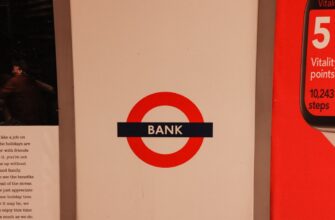Bitcoin offers exciting opportunities, but its decentralized nature demands heightened security awareness. With scams and hacking threats on the rise, knowing how to buy and sell Bitcoin safely is crucial for protecting your investment. This guide breaks down essential steps, best practices, and expert tips to navigate the crypto landscape securely.
How to Buy Bitcoin Safely
Follow these steps to minimize risks when purchasing Bitcoin:
- Choose a Reputable Exchange: Opt for regulated platforms like Coinbase, Kraken, or Binance. Verify their security features (SSL encryption, cold storage) and read user reviews.
- Enable Two-Factor Authentication (2FA): Always activate 2FA using an authenticator app (e.g., Google Authenticator) for login and withdrawal approvals.
- Use a Dedicated Crypto Wallet: Transfer Bitcoin from exchanges to a private wallet immediately. Hardware wallets (Ledger, Trezor) offer maximum security for large holdings.
- Start Small: Test the platform with a minimal purchase before larger transactions to verify processes.
- Verify Payment Methods: Link verified bank accounts or cards. Avoid peer-to-peer deals with unverified strangers.
How to Sell Bitcoin Safely
Secure selling requires vigilance at every stage:
- Select a Trusted Platform: Use established exchanges with fiat withdrawal options. Check withdrawal limits and fees beforehand.
- Confirm Recipient Details: Triple-check bank account or digital wallet addresses before transferring funds. One typo can lead to irreversible losses.
- Time Your Transaction: Avoid volatile market periods. Use limit orders to set your desired price instead of market orders during turbulence.
- Withdraw Funds Promptly: Move fiat currency to your bank account immediately after sale completion to reduce exposure.
- Document Everything: Keep records of transaction IDs, wallet addresses, and communications for tax and dispute purposes.
Top Security Practices for Bitcoin Transactions
Adopt these habits to safeguard your assets:
- Never Share Private Keys: Treat your 12-24 word recovery phrase like a bank PIN—store it offline and never digitize it.
- Update Software Regularly: Patch wallets and devices to fix vulnerabilities.
- Beware of Phishing: Double-check URLs and avoid clicking unsolicited links. Scammers often mimic exchange login pages.
- Diversify Storage: Split holdings between hot wallets (for frequent transactions) and cold storage (for long-term savings).
- Monitor Transactions: Use blockchain explorers like Blockchain.com to track transfers in real-time.
Bitcoin Safety FAQ
Q: What’s the safest wallet for Bitcoin?
A: Hardware wallets (e.g., Ledger Nano X) are most secure. They store keys offline, immune to online hacks.
Q: Can I reverse a Bitcoin transaction if scammed?
A: No. Bitcoin transactions are irreversible. Always verify recipient addresses and deal only with trusted parties.
Q: Are Bitcoin exchanges insured?
A: Some platforms (like Coinbase) offer partial insurance against breaches, but coverage is limited. Self-custody via wallets is safer.
Q: How do I spot fake crypto exchanges?
A: Check for regulatory licenses, HTTPS URLs, and community feedback. Avoid platforms with unrealistic returns or zero KYC requirements.
Q: Is peer-to-peer (P2P) trading safe?
A: Risky. Use escrow services on platforms like LocalBitcoins and never release funds before confirming receipt.
By combining trusted tools, disciplined habits, and ongoing education, you can confidently participate in the Bitcoin ecosystem. Remember: Security isn’t a one-time setup—it’s a continuous practice. Stay informed, stay skeptical, and prioritize asset protection at every step.








